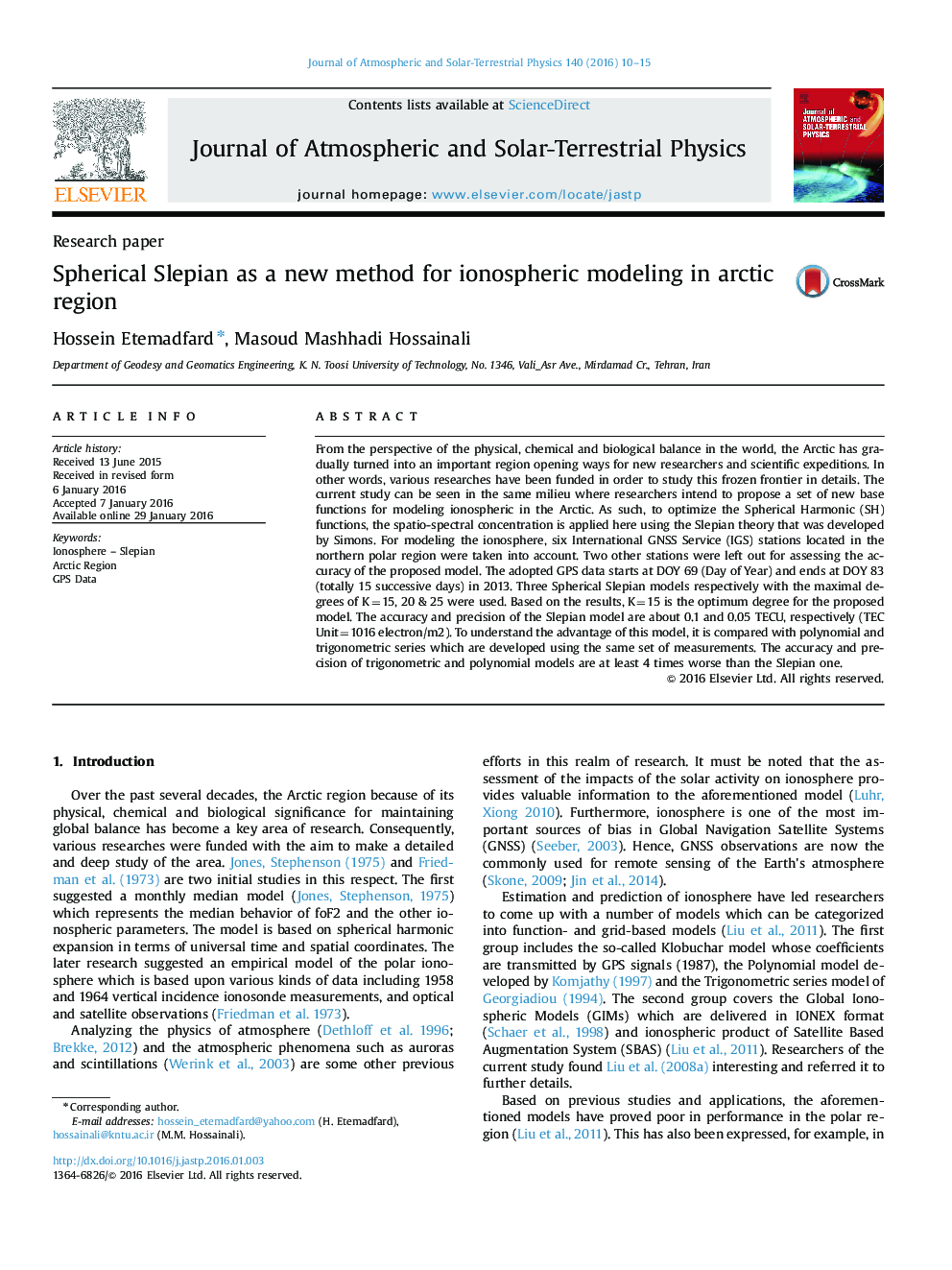| Article ID | Journal | Published Year | Pages | File Type |
|---|---|---|---|---|
| 1776237 | Journal of Atmospheric and Solar-Terrestrial Physics | 2016 | 6 Pages |
•A set of new base functions is proposed for modeling ionospheric in Arctic region.•This is done using the spherical Slepian theory which has been already developed by Simons.•Based on the obtained results, the K=15 is the optimum degree for the Spherical Slepian model.•The accuracy and precision of trigonometric and polynomial models are at least 4 times worse than the Slepian one.
From the perspective of the physical, chemical and biological balance in the world, the Arctic has gradually turned into an important region opening ways for new researchers and scientific expeditions. In other words, various researches have been funded in order to study this frozen frontier in details. The current study can be seen in the same milieu where researchers intend to propose a set of new base functions for modeling ionospheric in the Arctic. As such, to optimize the Spherical Harmonic (SH) functions, the spatio-spectral concentration is applied here using the Slepian theory that was developed by Simons. For modeling the ionosphere, six International GNSS Service (IGS) stations located in the northern polar region were taken into account. Two other stations were left out for assessing the accuracy of the proposed model. The adopted GPS data starts at DOY 69 (Day of Year) and ends at DOY 83 (totally 15 successive days) in 2013. Three Spherical Slepian models respectively with the maximal degrees of K=15, 20 & 25 were used. Based on the results, K=15 is the optimum degree for the proposed model. The accuracy and precision of the Slepian model are about 0.1 and 0.05 TECU, respectively (TEC Unit=1016 electron/m2). To understand the advantage of this model, it is compared with polynomial and trigonometric series which are developed using the same set of measurements. The accuracy and precision of trigonometric and polynomial models are at least 4 times worse than the Slepian one.
Graphical abstractThe analysis of the model accuracy : According to the obtained results, on average the model accuracy is better when the degree of model is K=15. At best, the accuracy of developed models are 0.02 TECU, 0.07 TECU and 0.2 TECU for K=15, K=20 and K=25, respectively. At worst, the accuracy of models are 0.3 TECU, 0.4 TECU and 0.8 TECU, respectively.Figure optionsDownload full-size imageDownload as PowerPoint slide
